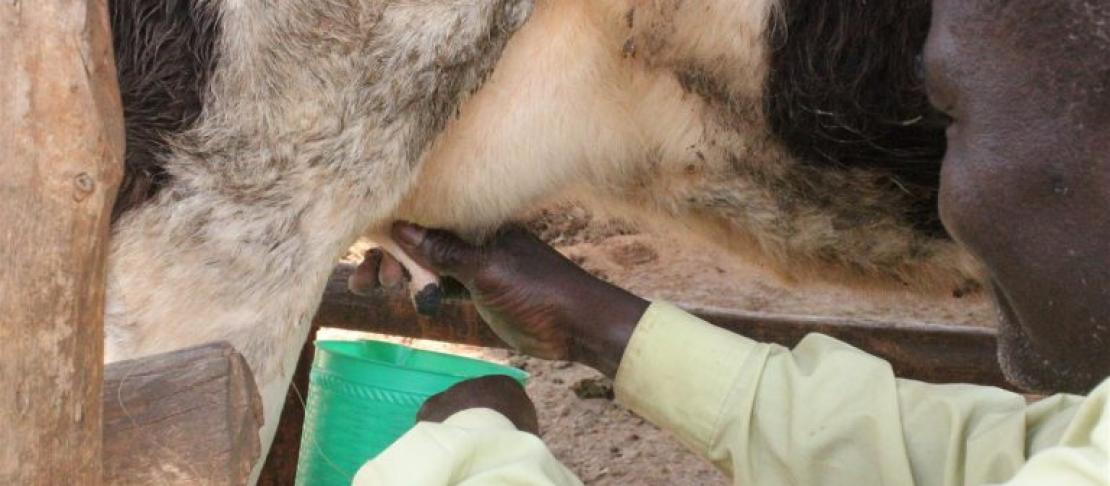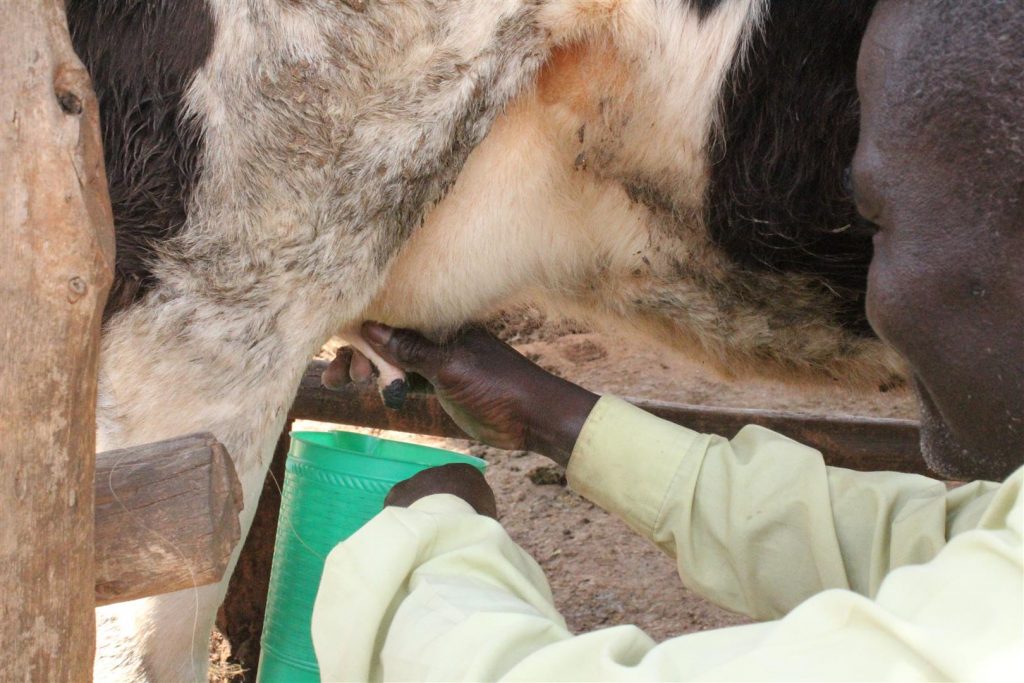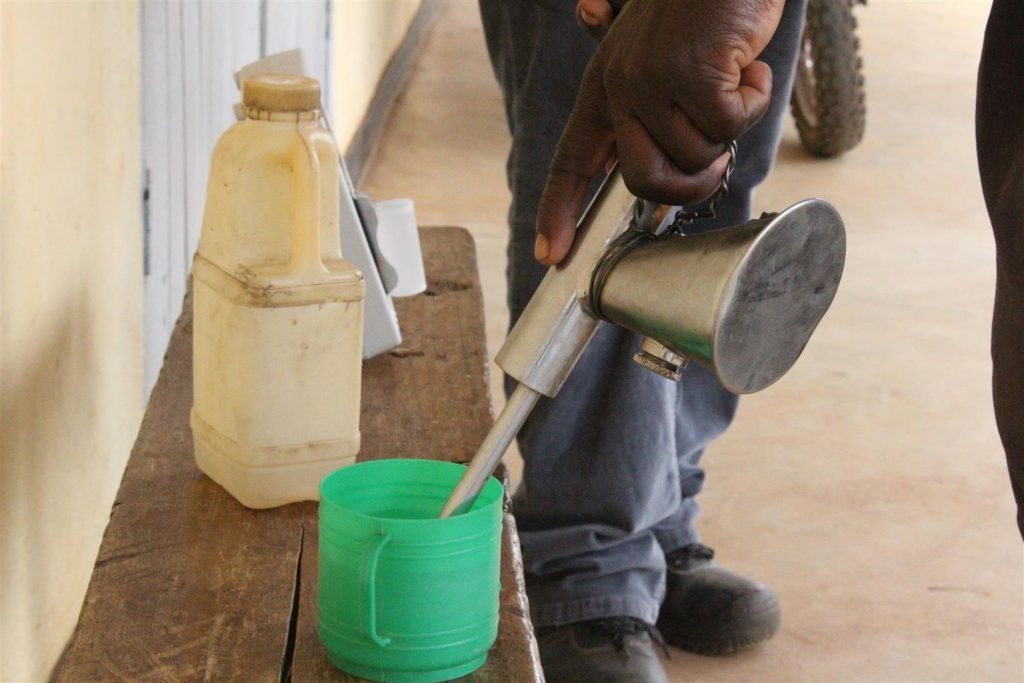Milk and money in Malawi: Reconnaissance visit to learn about the business challenges of smallholder dairy farming

This is an excerpt from an article originally posted on the Food & Business Knowledge Platform. Read the full article here.
Researchers from OSMARE1 – a GCP-4 research partnership funded by NWO and implemented by a global consortium from 2018-2020 – are studying the factors that detract from or contribute to resilient business models of smallholder farmers in East and Southern Africa. During a visit to a dairy farm, milk bulking group (MBG) and processing plant in Malawi in 2018, Francis Jiva and Rob Lubberink were introduced to some of the challenges in dairy production, from farm to fridge, and set out to better understand the context in which OSMARE research will take place over the next 3 years.
Background
OSMARE draws on the agribusiness models supported by Vuna – a 3-year Climate Smart Agriculture (CSA) programme, funded by UK-Aid and implemented by Adam Smith International in 5 countries in East and Southern Africa.
Vuna piloted a CSA-dairy project, working in 10 districts in Malawi, which sought to support dairy farming by addressing impacts of Climate Change. The Vuna project trained farmers on CSA practices and techniques and introduced technologies that address the issues of adaptation to and mitigation of climate change impacts, while addressing the dairy farmer’s business. OSMARE also considers if this intervention has strengthened the business of dairy farmers.
A smallholder dairy farmer part of the CSA Dairy project ran by Vuna in 2017-2018 milks his cow in the afternoon and prepares to take the milk to the milk bulking group.
Challenges for the dairy farmer
Hygiene and Quality
OSMARE met with Sarah2, a dairy farmer in Linthipe, one hour’s drive south of Lilongwe, Malawi. As a smallholder, she has 2 dairy cows that produce on average between 10-20 litres per cow per day and she grows legume seed – a typical combination of farming value chains in the region. But, as is the case with several other smallholder farmers, she faces challenges: maximising profit while maintaining milk quality, continuing milk sales through formal markets not informal side-selling, managing a household and adapting to the changing climate as she requires good quality feed for her cows.
As a dairy farmer selling to the formal market, her first challenge is hygiene and passing the MBG’s test for additives, adulteration and bacteria particles per millilitre. She explains that when selling to the formal market (the MBG), tests are performed on the milk at the bulking station. If she gets a positive result on all the tests, the milk is accepted, and she would receive payment. Additionally, she is able to receive a premium for the milk if it reaches a high quality. However, if the result indicates adulteration (i.e. a high quantity of water) or additives (i.e. baking soda) or if she fails the alcohol test (i.e. as a result of microbes in the milking container), the milk is rejected.
Sarah milks in the morning and evening and she normally combines the milk from the previous evening with the fresh morning milk. While it may affect the quality, she has little choice:
- she wants to produce a large quantity of milk, in the shortest time, with little harm to the cow. To do this, she undertakes 2 milking sessions;
- the MBG closes at a certain time of the day which means she can only take the milk to the MBG after the morning’s session. As some of the farmers travel some distance by foot or bicycle to the MBG, the milk is often exposed to the sun. If they travel too long after the milking process, this could result in compromising milk quality and further losses.
For Sarah, having introduced simple practices of washing hands, cleaning the cow’s udder, being aware of the cleanliness of the cow’s environment and using sanitised buckets or jugs, were key to hedge against some of the risk-factors compromising milk quality. The simple act of washing hands could be the difference between profit and loss.
But this might not always be the case. Hygiene seems to be a bigger factor when selling to the MBG, than it is when selling at the local market. Based on anecdotal evidence, when a buyer is in need of milk and has little money, they will buy directly from the nearest dairy farmer, in quantities they can afford and in containers they have available.
An employee at the Milk Bulking Group administers an alcohol test: milk brought by the farmer is drawn from the container into the silver filter, mixed with alcohol and poured on a petri dish.
Continue reading the article here.
Footnotes
1. OSMARE (Understanding and Scaling Organisational Structures for Smallholder Resilience) is a 3-year research project funded by NWO and research is undertaken by Wageningen University, Vuna, Lilongwe University of Agriculture and Natural Resources, World Agroforestry Centre (ICRAF), Zimbabwe Super Seeds and CCAFS.
2. Name of smallholder farmer changed for privacy.
Christopher Muller is a Consultant for CCAFS. Francis Jiva is Business Development Specialist at KIRK Consulting. Rob Lubberink is Postdoctoral Researcher at Wageningen University & Research (WUR).





